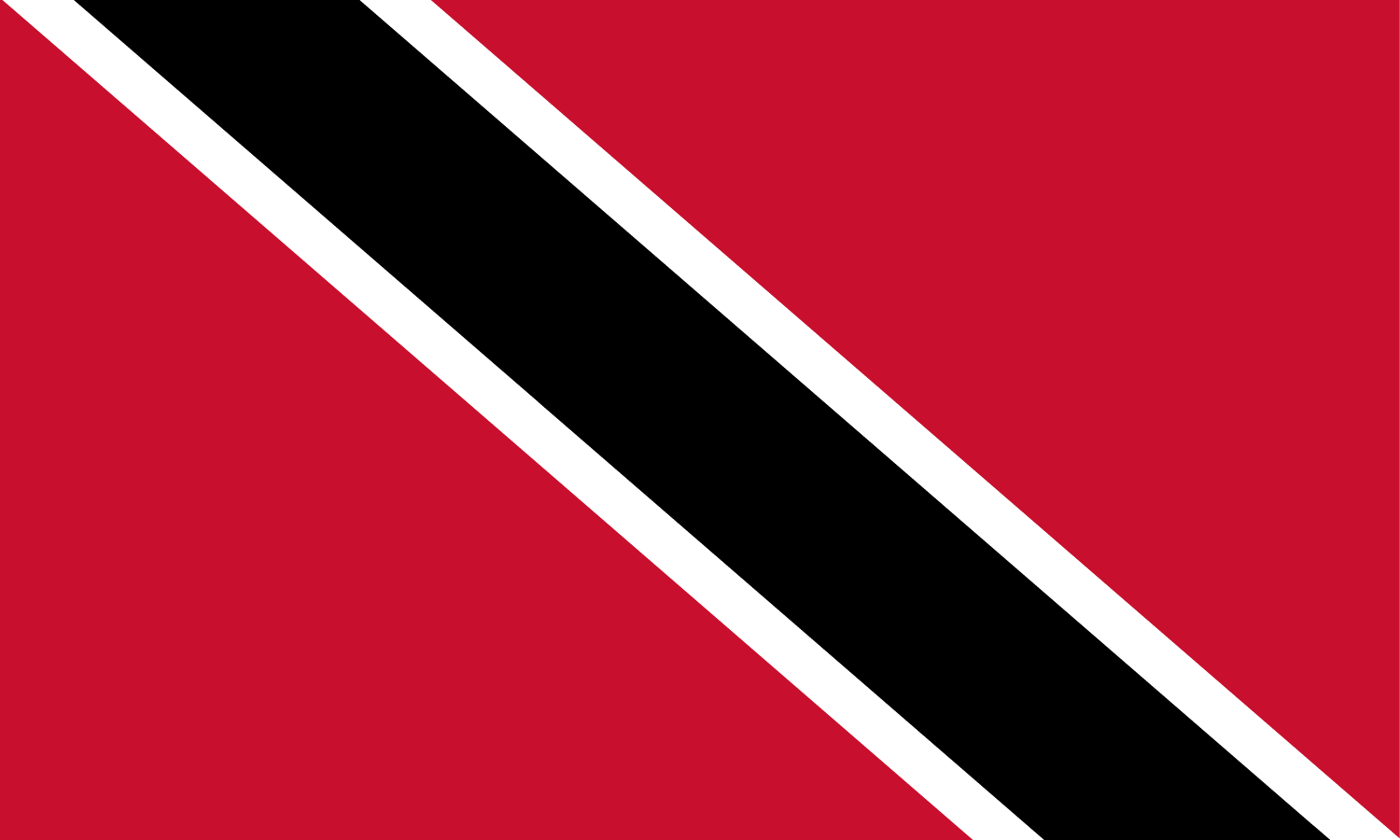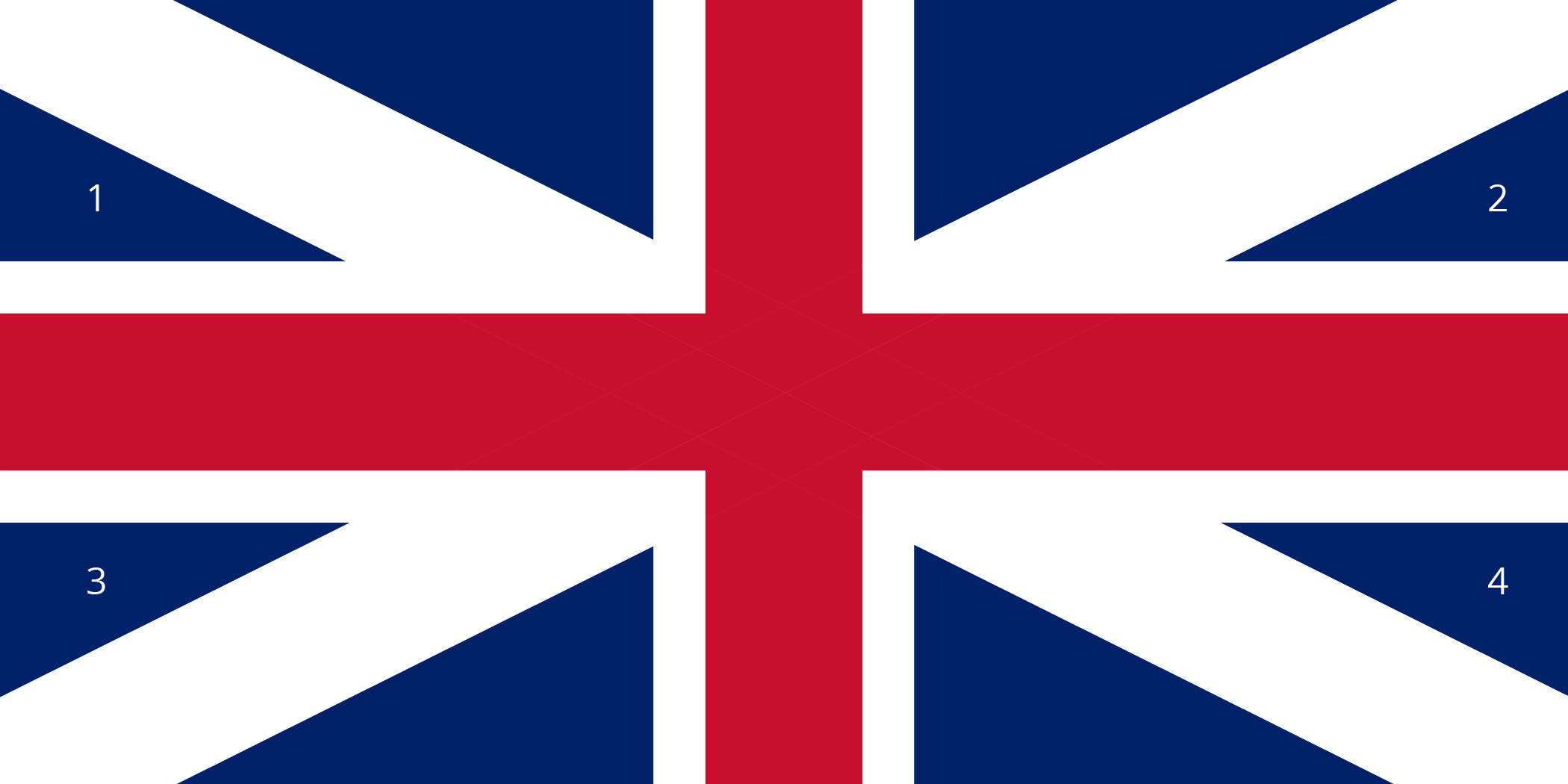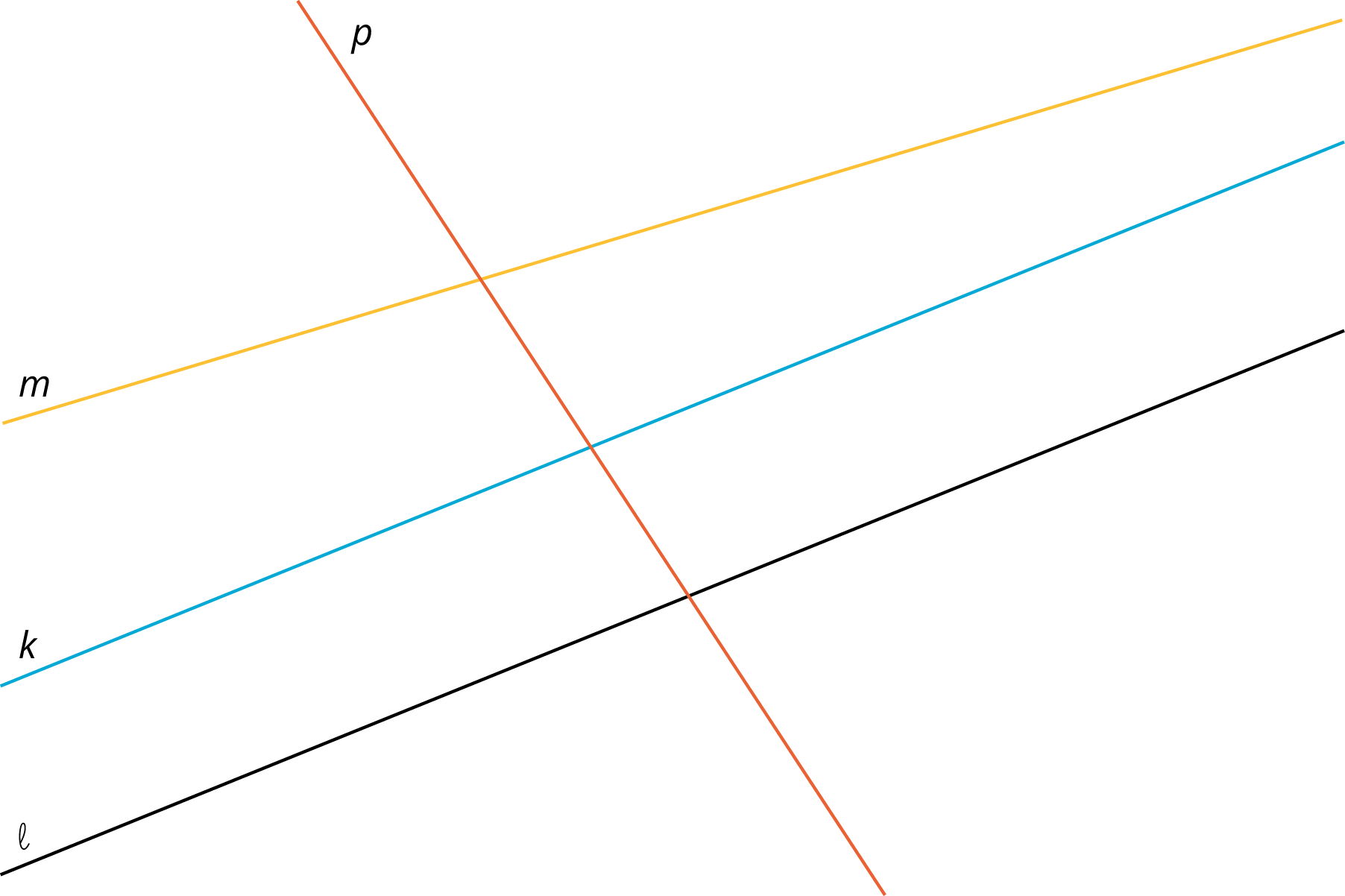Lesson 9
Composing Figures
Let’s use reasoning about rigid transformations to find measurements without measuring.
Problem 1
Here is the design for the flag of Trinidad and Tobago.

Describe a sequence of translations, rotations, and reflections that take the lower left triangle to the upper right triangle.
Problem 2
Here is a picture of an older version of the flag of Great Britain. There is a rigid transformation that takes Triangle 1 to Triangle 2, another that takes Triangle 1 to Triangle 3, and another that takes Triangle 1 to Triangle 4.

- Measure the lengths of the sides in Triangles 1 and 2. What do you notice?
- What are the side lengths of Triangle 3? Explain how you know.
- Do all eight triangles in the flag have the same area? Explain how you know.
Problem 3
- Which of the lines in the picture is parallel to line \(\ell\)? Explain how you know.

- Explain how to translate, rotate or reflect line \(\ell\) to obtain line \(k\).
- Explain how to translate, rotate or reflect line \(\ell\) to obtain line \(p\).
Problem 4
Point \(A\) has coordinates \((3,4)\). After a translation 4 units left, a reflection across the \(x\)-axis, and a translation 2 units down, what are the coordinates of the image?
Problem 5
Here is triangle \(XYZ\):

Draw these three rotations of triangle \(XYZ\) together.
- Rotate triangle \(XYZ\) 90 degrees clockwise around \(Z\).
- Rotate triangle \(XYZ\) 180 degrees around \(Z\).
- Rotate triangle \(XYZ\) 270 degrees clockwise around \(Z\).